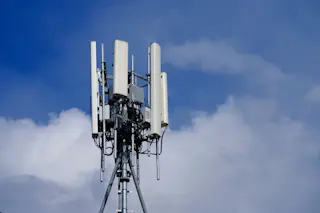Years of working his 3,000-acre family farm in Middletown, Delaware, have impressed Robert Baker with the value of precision. To squeeze every penny from these fields of corn, wheat, and soybeans, he needs to lay down insecticide and fertilizer along exact paths. Any error eats into the profits: "If there is a gap, you get weed competition. If you overlap, you damage the crop or waste the spray."
A generation ago, his father might have posted directional flags, sprayed foam, or even hired workers to stand amid the crops like scarecrows. These days, after investing a modest $6,000 in computer software and a portable location-tracking device, Baker and his two brothers work under the guidance of radio signals from a constellation of global positioning system (GPS) satellites orbiting overhead. When the tractor is on course, a bar of lights on a dash-mounted "parallel tracking" display glow green. But if the ...














